Digital Posters
Advanced Brain Tumor Imaging
ISMRM & SMRT Annual Meeting • 15-20 May 2021

| Concurrent 6 | 15:00 - 16:00 |
 |
3907.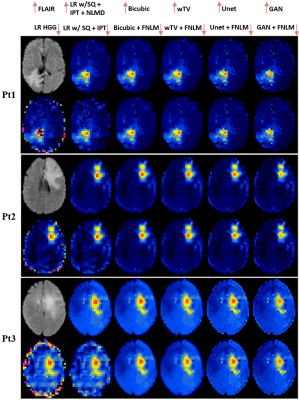 |
Deep learning super-resolution MR spectroscopic imaging to map tumor metabolism in mutant IDH glioma patients
Xianqi Li1, Bernhard Strasser1, Kourosh Jafari-Khouzani2, Daniel P Cahill3, Jorg Dietrich4, Tracy T Batchelor4, Martin Bendszus5, Ulf Neuberger6, Philipp Vollmuth6, and Ovidiu Andronesi7
1Radiology, Massachusetts General Hospital, Charlestown, MA, United States, 2IBM Watson Health, Boston, MA, United States, 3Neurosurgery, Massachusetts General Hospital, Boston, MA, United States, 4Massachusetts General Hospital, Boston, MA, United States, 5Heidelberg University Hospital, Boston, MA, United States, 6Heidelberg University Hospital, Heidelberg, Germany, 7Massachusetts General Hospital,, Charlestown, MA, United States
We developed deep learning super-resolution MR spectroscopic imaging (MRSI) to map tumor metabolism in patients with mutant IDH glioma. A generative adversarial network (GAN) architecture comprised of a UNet neural network as the generator network and a discriminator network for adversarial training was employed to upsample MR spectroscopic imaging data with a factor of four. The preliminary results on simulated and in vivo data indicate that the proposed deep learning method is effective in enhancing the spatial resolution of metabolite maps which may better guide treatment in mutant IDH glioma patients.
|
||
3908.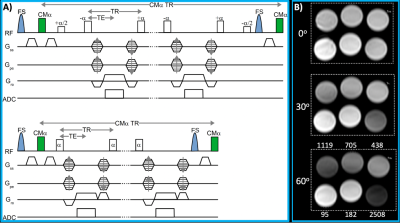 |
Twofold Improved Tumor-to-Brain Contrast using a Novel T1 Relaxation-Enhanced Steady-State (T1RESS) Technique
Robert R Edelman1,2, Nondas Leloudas3, Jianing Pang4, Julian Bailes5, Ryan Merrell6, and Ioannis Koktzoglou3,7
1Radiology, NorthShore University HealthSystem, EVANSTON, IL, United States, 2Feinberg School of Medicine, Northwestern University, Chicago, IL, United States, 3Radiology, NorthShore University HealthSystem, Evanston, IL, United States, 4Siemens Medical Solutions USA, Chicago, IL, United States, 5Neurosurgery, NorthShore University HealthSystem, Evanston, IL, United States, 6Medicine, NorthShore University HealthSystem, Evanston, IL, United States, 7Pritzker School of Medicine, University of Chicago, Chicago, IL, United States
We describe a novel class of steady-state pulse sequence called T1 Relaxation-Enhanced Steady-State (T1RESS). Several versions have been implemented including: (a) “bright blood” balanced T1RESS (bT1RESS), and (b) “dark blood” unbalanced T1RESS (uT1RESS). There is also a two-echo Dixon version for fat/water separation. In a brain tumor study, contrast-enhanced T1RESS demonstrated a remarkable two-fold improvement in tumor-to-brain contrast as well as enhanced SNR compared with standard neuroimaging techniques, including MP-RAGE and T1 SPACE. Our initial results suggest that T1RESS has great potential for oncological imaging in the brain, and with further development in other organ systems as well.
|
|||
3909.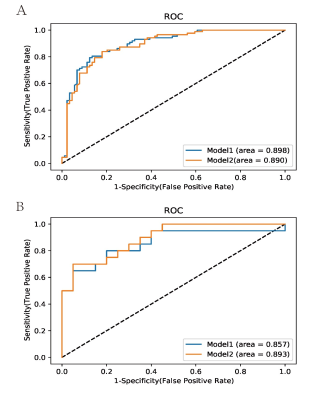 |
Predictive Role of the ADC measurements and MRI Morphologic Features on Isocitrate Dehydrogenase Status in Patients with Diffuse Glioma.
jun zhang1,2, Hong Peng1, Yu-Lin Wang1, De-Kang Zhang1, and Lin Ma1
1Radiology, Chinese PLA general hospital, BeiJing, China, 2radiology, the sixth center of Chinese PLA general hospital, BeiJing, China
The IDH status has been reported as major prognostic factors for glioma behavior. Thus, noninvasively detecting molecular subtypes before surgery is important for predicting the outcome and choosing therapy. In this study, using machine-learning algorithms, the accurate prediction of IDH subtype was achieved for diffuse gliomas via noninvasive MR imaging, including ADC values and tumor morphologic features, and it is worth mentioning ADC measurements applied are available in clinical workstations. Furthermore, to our knowledge, no previous attempts have been made to use different machine-learning methods to build a suitable model to predict the IDH status for WHO grade II-IV gliomas.
|
|||
3910.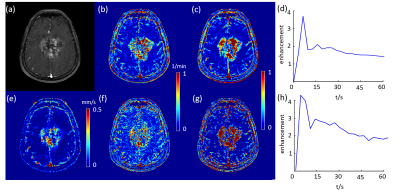 |
Glioblastoma grading using perfusion parameters: comparing quantitative transport mapping method and kinetic modeling method
Qihao Zhang1, Gloria Chia-Yi Chiang2, Thanh Nguyen2, Pascal Spincemaille2, and Yi Wang1
1Cornell University, New York, NY, United States, 2Weill Cornell Medical College, New York, NY, United States
We purpose to test the performance of glioblastoma grading using several perfusion parameters: QTM velocity U, volume transfer constant Ktrans, and blood volume fraction Ve. For Ktrans and Ve calculated using extended Toft’s model, two arterial input function are used: one sampled from Carotid artery and one sampled from the feeding artery near the tumor. The result shows that U has the best classification accuracy comparing with other parameters.
|
|||
3911.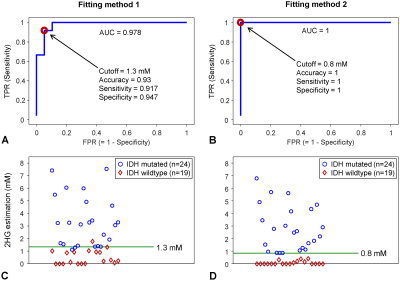 |
Strategy to overcome the spectral overlap between the 2-hydroxyglutarate and lipid resonances at 2.25 ppm
Pegah Askari1, Ivan E Dimitrov1, Michael Levy1, Toral R Patel1, Edward Pan1, Bruce E Mickey1, Craig R Malloy1, Elizabeth A Maher1, and Changho Choi1
1University of Texas Southwestern Medical Center, Dallas, TX, United States
In proton MRS, the 2.25 ppm resonance of 2-hydroxyglutarate (2HG), which gives the largest signal in many acquisition methods, is overlapped with the lipid resonance at 2.25 ppm, complicating evaluation of 2HG in necrotic tumors with elevated lipids. We propose a novel approach for separation of the 2HG and lipid overlapped signals in spectral fitting. We developed new lipid basis sets and tested on proton MRS (PRESS TE 97ms at 3T) data from 43 glioma patients. LCModel fitting using the new lipid basis sets resulted in complete distinction between IDH mutation and wildtype (accuracy, sensitivity, and specificity all unity).
|
|||
3912. |
Vascular input function measurement in brain tumor DCE-MRI: a comparison of arterial and venous sinus based approaches
Xiaoping Zhu1, Daniel Lewis2, Ka-Loh Li1, Sha Zhao3, Timothy Cootes1, Andrew King2, David Coope2, and Alan Jackson3
1DIIDS, University of Manchester, Manchester, United Kingdom, 2Neurosurgery, Salford Royal NHS Foundation Trust, Manchester, United Kingdom, 3University of Manchester, Manchester, United Kingdom
Accurate derivation of a vascular input function (VIF) is essential for pharmacokinetic modeling of brain DCE-MRI data. In this patient study we compared VIFs extracted from either the internal carotid artery (ICA) and its branches or the superior sagittal sinus (SSS). We demonstrate that plasma gadolinium based contrast-agent (GBCA) concentration-time curves during the 1st-pass of the bolus are equivalent in shape in both the ICA and SSS; and that compared to large intracranial arteries the SSS is able to provide a superior global VIF, with lower noise, higher peak-amplitude and demonstrably greater sensitivity to inter-individual changes in plasma GBCA concentration.
|
|||
3913.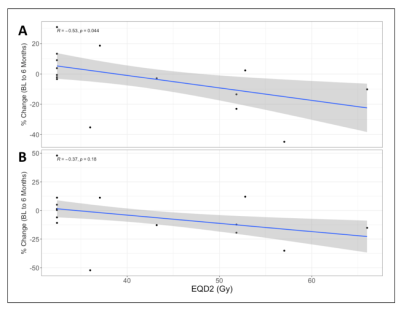 |
Structural and Functional Changes in Patients with Lower Grade Tumors Receiving Partial Brain Radiotherapy: A Longitudinal Study
Alan Finkelstein1, Arun Venkataraman2, Madalina Tivarus3, Md Nasir Uddin4, Jianhui Zhong1,2,3, Giovanni Schifitto3,4, Michael Milano5, Michelle Janelsins6, and Sara Hardy4,5
1Biomedical Engineering, University of Rochester, Rochester, NY, United States, 2Physics and Astronomy, University of Rochester, Rochester, NY, United States, 3Imaging Sciences, University of Rochester, Rochester, NY, United States, 4Neurology, University of Rochester, Rochester, NY, United States, 5Radiation Oncology, University of Rochester, Rochester, NY, United States, 6Surgery, University of Rochester, Rochester, NY, United States
Patients receiving partial brain radiotherapy (RT) experience cognitive impairment. Determining what structures and networks in the brain are susceptible to RT will help to elucidate mechanisms of cognitive impairment in the setting of RT. In this abstract, we examine structural and functional changes before and 6 months post RT in patients with lower grade brain tumors. Further, graph theory analysis of functional connectivity (FC) data was used to investigate network topology. We found that subcortical volume and local graph theory metrics were significantly correlated with RT dose. We also propose a putative link between volumetric changes and network topology.
|
|||
3914.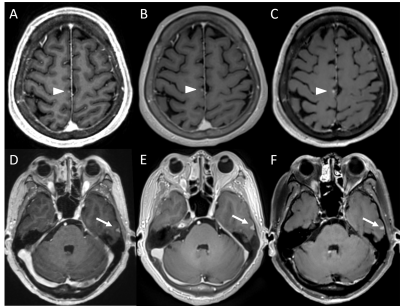 |
Contrast-enhanced T1-weighted DANTE-SPACE, PETRA, and MPRAGE: clinical evaluation comparison in intracranial tumor patients at 3T
Qing Fu1,2, Qi-guang Cheng1,2, Xiao-yong Zhang3, Xiang-chuang Kong1,2, Ding-xi Liu1,2, Yi-hao Guo4, John Grinstead5, Zi-qiao Lei1,2, and Chuan-sheng Zheng1,2
1Department of Radiology, Union Hospital, Tongji Medical College, Huazhong University of Science and Technology, Wuhan, China, 2Hubei Province Key Laboratory of Molecular Imaging, Wuhan, China, 3Centers for Biomedical Engineering, University of Science and Technology of China, Hefei, China, 4MR Collaboration, Siemens Healthcare Ltd., Guangzhou, China, 5Siemens Medical Solutions USA, Inc., Portland, OR, United States
Three dimensional (3D) T1-weighted sequences are commonly used for imaging of contrast-enhanced brain tumors, but enhancement of small vessels may mimic imaging of focal lesions, thereby hindering accurate diagnosis. This study validated that when compared with PETRA and conventional MPRAGE, DANTE-SPACE detects more small metastases with better CNR between lesions and surrounding parenchyma, and may be useful for differential tumor diagnosis because of its blood signal suppression abilities; PETRA could achieve similar detection for brain tumors and quieter acoustic noise level when compared with MPRAGE.
|
|||
3915. |
Evaluation of Ultrafast Post-Contrast Wave-CAIPI 3D-T1 MPRAGE Compared to Standard 3D-T1 MPRAGE for Evaluating Enhancing Lesions on 3T MRI.
Augusto Lio M. Goncalves Filho1,2, John Conklin1,2, Chanon Ngamsombat3, Stephen F. Cauley2, Wei Liu4, Daniel N. Splitthoff5, Wei-Ching Lo6, John E. Kirsch1, Pamela W. Schaefer1, Otto Rapalino1, and Susie Y. Huang1,2
1Department of Radiology, Massachusetts General Hospital, Boston, MA, United States, 2Department of Radiology, Athinoula A. Martinos Center for Biomedical Imaging, Charlestown, MA, United States, 3Department of Radiology, Siriraj Hospital, Bangkok, Thailand, 4Siemens Shenzhen Magnetic Resonance Ltd., Shenzhen, China, 5Siemens Healthcare GmbH, Erlangen, Germany, 6Siemens Medical Solutions Inc., Boston, MA, United States
We compared a highly accelerated post-contrast Wave-CAIPI 3D T1 MPRAGE sequence to the standard 3D T1 MPRAGE in 80 patients undergoing imaging evaluation of intracranial enhancing lesions on 3T MRI. Two neuroradiologists performed a head-to-head analysis to assess the images and found that post-contrast 3D Wave-T1 MPRAGE was up to 2x faster than the standard sequence with no significant difference in the detection of enhancing lesions. The application of highly accelerated Wave-T1 MPRAGE may improve use of MRI resources while reducing patient anxiety and being less prone to motion artifacts.
|
|||
3916.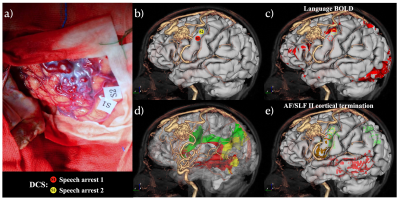 |
DiffusionGo: A fully automatic fiber tracking software for neurosurgeon
Shin Tai Chong1, Jianping Song2, Kuan-Tsen Kuo3, Yu-Ting Ko3, Sanford PC Hsu4, Jinsong Wu2, and Ching-Po Lin1
1Institute of Neuroscience, National Yang-Ming University, Taipei, Taiwan, 2Department of Neurosurgery, Huashan Hospital, Shanghai Medical College, Fudan University, Shanghai, China, 3ABC Solution Co., Ltd, Shanghai, China, 4Department of Neurosurgery, Neurological Institute, Taipei Veterans General Hospital, Taipei, Taiwan
DiffusionGo is an in-house developed software specially designed for neurosurgeons, which integrated a reliable pre-processing pipeline, fully automatically fiber reconstruction algorithm, and multimodalities imaging information to achieve easy modeling and precision surgery.
|
|||
3917.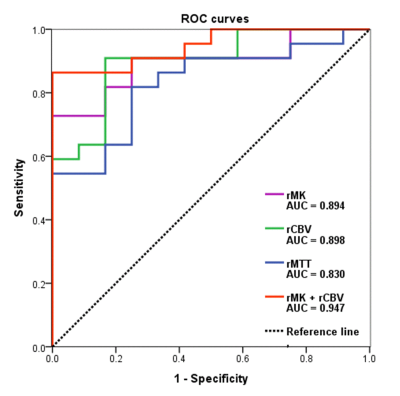 |
The combined value of DKI and DSC MRI in differentiating high-grade glioma recurrence from pseudoprogression
Yan Tan1, Wenwei Shi2, Xiaochun Wang1, and Hui Zhang1
1Department of Radiology, First Hospital of Shanxi Medical University, Taiyuan, China, 2Department of Radiology, Zhongda Hospital, Southeast University, Nanjing, China
To evaluate the diagnostic performance of DKI in differentiating glioma recurrence from pseudoprogression and the combined value of DKI and DSC MRI parameters. Tumor recurrence was confirmed to be associated with more tumor angiogenesis, greater nuclear atypia, and increased cell density, whereas pseudoprogression is characterized by radiation-induced vascular changes leading to vasodilation, edema, and increased capillary permeability. These resulted in a more complex structure of recurrent tumor than pseudoprogression. It is concluded DKI and DSC MRI may serve as imaging biomarker of treatment response by characterizing the heterogeneity of the microenvironment and newly formed immature blood vessels.
|
|||
3918.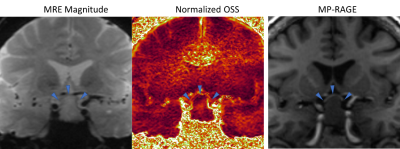 |
Development of MR Elastography Methods for Assessing Adhesion Between Pituitary Masses and the Optic Chiasm
Yi Sui1, Myung-Ho In1, Salomon Cohen-Cohen2, Erin Gray1, Kevin Glaser1, Matt A. Bernstein1, Jamie J Van Gompel2, Richard L. Ehman1, John Huston III1, and Ziying Yin1
1Radiology, Mayo Clinic, Rochester, MN, United States, 2Neurologic Surgery, Mayo Clinic, Rochester, MN, United States
Preoperatively knowing if a pituitary adenoma is adhering to the optic chiasm would help to predict the risk of surgically induced vision loss. MR-elastography based slip interface imaging has been successfully developed to predict tumor adhesion using normalized octahedral shear strain (NOSS). This pilot study demonstrates the feasibility of acquiring NOSS at ~1mm high resolution using a newly developed distortion-free EPI-MRE technique on a high-performance compact 3T system. With further development, this technique will have great potential to identify adhesion between pituitary adenomas with the adjacent optic chiasm.
|
|||
3919.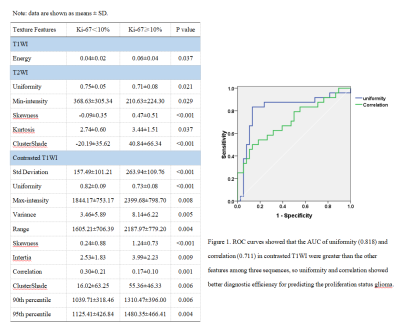 |
Conventional MRI Texture Analysis to Predict Proliferative Behaviour in Gliomas
Xiaoxin Li1, Qingwei Song1, Ailian Liu1, Lizhi Xie2, and Yanwei Miao1
1First Affiliated Hospital of Dalian Medical University, Dalian, China, 2GE Healthcare, MR Research China, Beijing, China
To evaluate the application value of texture analysis based on conventional MRI for predicting the cell proliferation status of glioma. Patients with glioma were divided into two groups by Ki-67, group 1 was Ki-67 less than or equal to 10% and group 2 was Ki-67 more than 10%. The texture feature value of T1WI, T2WI, and contrasted T1WI were obtained by Omni-Kinetics software. The texture features of three sequences were significantly different between two groups, and uniformity and correlation showed better diagnostic efficiency. So the texture analysis based on conventional MRI is useful to predicting cell proliferation status of glioma.
|
|||
3920.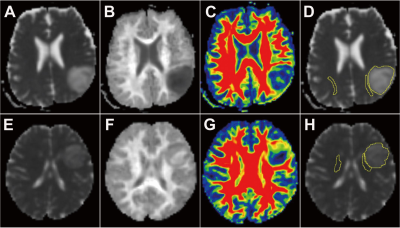 |
Value of Diffusion Kurtosis Imaging in Detecting Isocitrate Dehydrogenase Genotype in Low-grade Gliomas
Tao Gong1, Liangjie Lin2, and Yihang Yang3
1Shandong Medical Imaging Research Institute, Jinan, China, 2Philips Healthcare, Beijing, China, 3Shandong provincal hospital, Jinan, China
The aim of this study was to detect the isocitrate dehydrogenase 1 (IDH 1) genotype in low grade gliomas using diffusion kurtosis imaging (DKI). The results indicated that IDH 1 wild-type gliomas have higher MK and lower MD values in tumor foci compared with mutant gliomas, and MK increased and MD decreased significantly in normal-appearing perilesional white matter (pWM) in all gliomas. Interestingly, lower FA in pWM than contralateral normal-appearing white matter was only seen in wild-type gliomas, while no difference was found in mutant-gliomas. These findings indicated that DKI were sensitive to differentiate IDH 1 genotypes in low-grade gliomas.
|
|||
3921.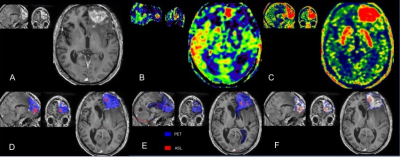 |
Simultaneously acquired PET and ASL imaging biomarkers are helpful in differentiating progression from pseudo-progression in treated gliomas
Nadya Pyatigorskaya1,2,3, Arnaud Pellerin1, Maya Kalife4, Marc Bertaux5, Marine Soret5, Didier Dormont1, and Aurélie Kas5
1Neuroradiology, Pitié-Salpêtrière Hospital, APHP, Sorbonne universite, Paris, France, 2UMR S 1127, CNRS UMR 722, ICM, Sorbonne Universités, Paris, France, 3CENIR, ICM, Sorbonne Universités, Paris, France, 4CENIR, ICM, Paris, France, 5Nuclear Medecine, Pitié-Salpêtrière Hospital, APHP, Sorbonne universite, Paris, France
We aimed at investigating the methods based on coupling cerebral perfusion (ASL) and amino-acid metabolism (18F-DOPA-PET) measurements to evaluate the diagnostic performance of simultaneous PET/MRI in glioma follow-up. Tumour isocontour maps of 18F-DOPA-PET and ASL T-maps were created using SPM and metabolic/perfusion abnormalities were evaluated with the asymmetry index z-score. SPM map analysis of significant-size clusters and semi-quantitative PET and ASL map evaluation were performed. The tumour isocontour maps and T-maps showed the highest specificity (100%) and sensitivity (94.1%) for ASL and 18F-DOPA analysis, allowing to achieve high diagnostic performance in differentiating between progression and pseudo-progression in treated gliomas.
|
|||
3922.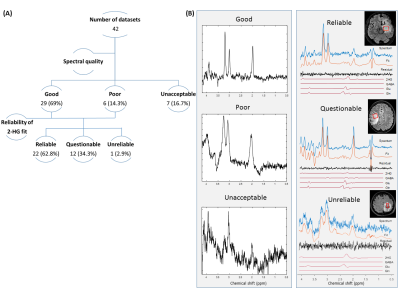 |
Applying 2HG MRS in glioma patients during routine clinical MRI examination
Zahra Shams1, Sarah M. Jacobs1, Jan W. Dankbaar1, Changho Choi2, Dennis W.J. Klomp1, Jannie P. Wijnen1, and Evita C. Wiegers1
1Department of Radiology, University Medical Center Utrecht, Utrecht, Netherlands, 2Advanced Imaging Research Center, University of Texas Southwestern Medical Center, Dallas, TX, United States
2HG is a valuable biomarker to detect mutational status of glioma patients. Therefore, it is of great value to be widely integrated into clinical practice. This study investigates the performance of along echo time (PRESS 97ms) 1H MRS protocol at 3Tesla to be used in routine clinical glioma imaging.
|
|||
3923.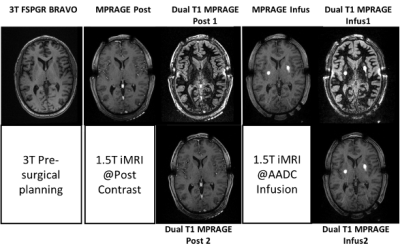 |
High dual-contrast putamen MRI at 1.5T: Application to intraoperative MRI during neurosurgical procedure
Chan Hong Moon1, Krystof Bankiewicz2, Paul Larson2, Adrian Kells3, Alastair J. Martin2, Stephen Mancuso4, and Mark Richardson5
1University of Pittsburgh, Pittsburgh, PA, United States, 2University of California San Francisco, San Francisco, CA, United States, 3Voyager Therapeutics Inc., Cambridge, MA, United States, 4UPMC, Pittsburgh, PA, United States, 5Massachusetts General Hospital, Boston, MA, United States
Neurosurgical planning/targeting/monitoring by MRI requires high contrast and excellent anatomical feature. Inversion recovery MRI, e.g., MPRAGE is known to be superior to T1w SPGR in making high contrast of WM vs. GM. However, it is not optimized for putamen/globus pallidus, i.e., important target nuclei in PD surgery, particularly iMRI scanner 1.5T (not 3T). In this study, we developed new dual-contrast MPRAGE and maximized T1 contrast in putamen as well as good anatomy of whole brain without additional acquisition compared to conventional MPRAGE. The proposed methods were applied to 1.5T iMRI during neurosurgical procedure of PD patients.
|
|||
3924.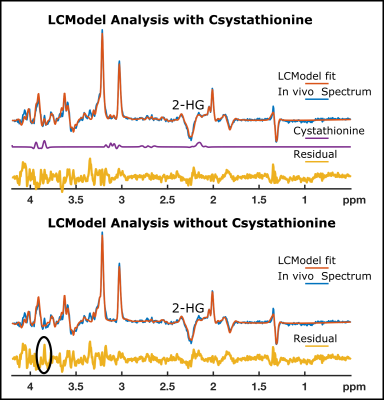 |
Detection of Cystathionine, 2-Hydroxyglutarate and Citrate in Oligodendrogliomas at 7T using Long-TE Semi-LASER
Uzay E Emir1,2, Natalie E Voets3, Sarah E Larkin4, Nick De Pennington4, Puneet E Plaha4, Richard E Stacey4, James E Mccullagh4, Christopher J Schofield4, Stuart E Clare3, Peter Jezzard3, Thomas Cadoux-hudson4, and Olaf E Ansorge4
1School of Health Sciences, Purdue University, West Lafayette, IN, United States, 2Weldon School of Biomedical Engineering, Purdue University, West Lafayette, IN, United States, 3Wellcome Centre for Integrative Neuroimaging, Nuffield Dept of Clinical Neurosciences, University of Oxford, Oxford, United Kingdom, 4University of Oxford, Oxford, United Kingdom
Given the rapid pace of discoveries in glioma genomics and metabolomics, it is likely that improvements in diagnostic imaging using UHF MRS can be made by systematically reanalyzing previously generated data in light of new knowledge. In this study, we tested this by reanalyzing existing UHF MRS spectra using a refined basis set that included the potential oncometabolite cystathionine
|
|||
3925.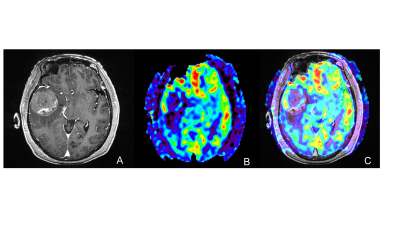 |
Dose Painting Intensity-modulated Radiotherapy Guided by 3D arterial spin labeling MRI for Brain Metastases
Chuanke Hou1, Guanzhong Gong1, Weiqiang Dou2, and Yong Yin1
1Department of Radiation Physics, Shandong Cancer Hospital and Institute, Shandong First Medical University and Shandong Academy of Medical Sciences, Jinan, China, 2GE Healthcare, MR Research China, Beijing, China
In this work, brain metastases (BM) were divided into multiple sub-volumes based on the cerebral blood flow (CBF) distribution derived by 3D arterial spin labeling (ASL) perfusion imaging. Due to the previously reported strong relationship, low CBF area was defined as the hypoxia area and selected as the region of interest (ROI). On this ROI, we further investigated the behaviors of conventional Intensity-modulated Radiotherapy (IMRT) plan, simultaneous integrated boost IMRT plan with and without constraints by increasing targeted doses, aiming to provide a new reference model for individualized radiotherapy for BM patients.
|
|||
3926. |
Multi-parametric MRI in differentiation between brain tumor and radiation necrosis
Sean P Devan1, Xiaoyu Jiang1, Guozhen Luo2, Jingping Xie1, Zhongliang Zu1, Ashley M Stokes3, Austin N Kirschner2, John C Gore1, and Junzhong Xu1
1Institute of Imaging Science, Vanderbilt University Medical Center, Nashville, TN, United States, 2Radiation Oncology, Vanderbilt University Medical Center, Nashville, TN, United States, 3Keller Center for Imaging Innovation, Barrow Neurological Institute, Phoenix, AZ, United States
It remains a challenge to differentiate between recurrent tumors from radiation induced necrosis in the brain. One promising approach is to combine complementary information on different scales obtained using multi-parametric MRI to comprehensively characterize tissue histopathological properties. In this preliminary study, we performed six multi-parametric MRI acquisitions including APT (probing mobile proteins), NOE (mobile macromolecules), qMT (macromolecules), ADC (cell density), SSIFT (cell size), and DSC (perfusion) to differentiate 9L gliosarcoma from radiation necrosis in animal models. The results suggest APT and SSIFT provide the best discrimination of different tissue types, but a larger sample size is required for further validation.
|
The International Society for Magnetic Resonance in Medicine is accredited by the Accreditation Council for Continuing Medical Education to provide continuing medical education for physicians.